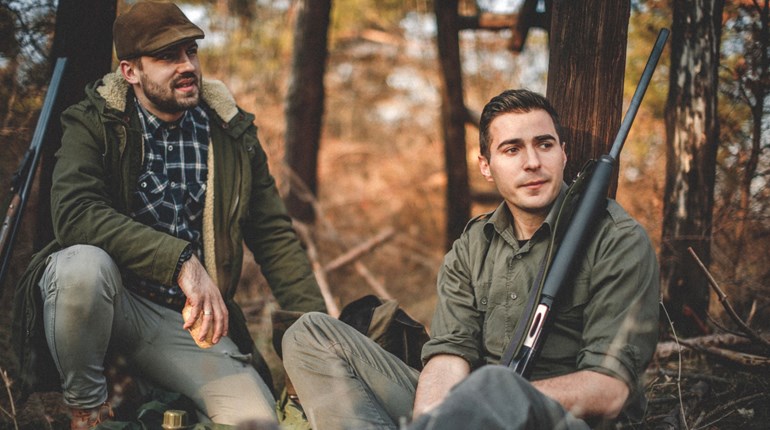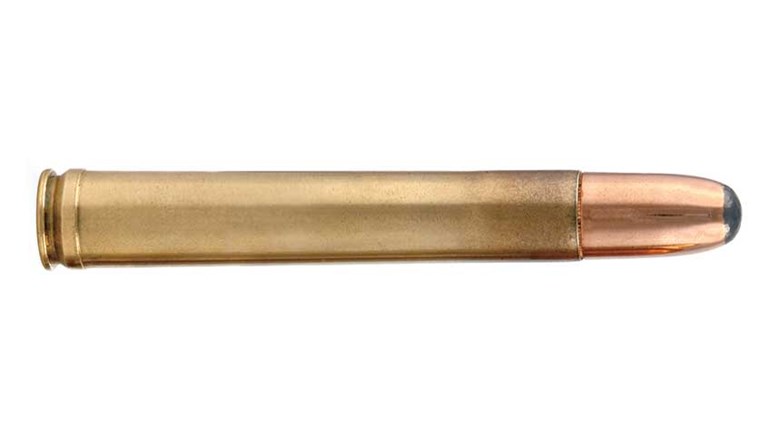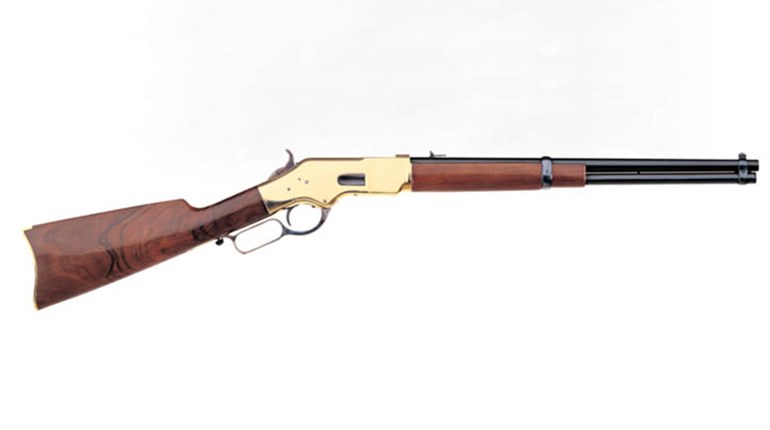
The dark here is different.
I suppose that can be said about any location, except we usually fail to notice. We modern humans with our busy, iPhone-directed lives are programmed to visual stimulus at the expense of the other senses.
Until the lights go out.
When you are sitting through that “before the dawn” thing, the subtle and non-visual influences that are unique to the place rise to prominence. The sounds, smells and just the “feel” are feeding your other senses and it can be a wonderful experience.
Hunters understand that. Who among us has not waited in the dark, buzzing with anticipation for the day to begin? It is something that is reserved, I suppose, only for hunters and soldiers and of the two I think we have the better deal.
If you have never seen a place in daylight, sitting in the gloom of almost total darkness will paint pictures in your mind. Today, it is telling me that this place is unlike any other I have hunted before.
I close my eyes and try to turn off my brain. I can smell the mud and the scent of the cut fields, and I feel the thick coastal air. Above it all are the greasy odors of the swamp buggy we drove to get here and the ticking as the motor cools. There is water—I can smell it, sense it, feel it.
Of course, the mosquitos give me a hint, too. Even in the chill of this late-fall morning I am feeding a generation of them. I don’t dare turn on a light to find my DEET, so I turn up my hood, jam my hands in my pockets and curse them savagely in my mind.
Then the rain starts.
It seems like the rain is following me no matter where I am hunting. A few weeks ago on the other side of the continent, on yet another bear hunt, the rain caused huge problems. We were stuck in soggy tents for days. We ran out of food and toilet paper, and we missed our flights home. So, yeah, huge problems.
What havoc it will wreak here is yet to be seen. But I know that bears do not like the rain any more than I do. It turns off bear activity, just as it makes me find excuses to hide out someplace dry.
I have long believed that my spirit animal is the bear. I relate to his solitary nature, his power, his intelligence and his “leave me alone” attitude. Of course my critics say it’s more likely because I am built like a bear and tend toward his “just out of hibernation” grumpy disposition.
No matter. I like bears. I relate to bears. I understand bears. And I love hunting bears.
I have been fortunate to hunt black bears almost every way it’s done. Of course I liked some better than others, but there is no bear hunt I wouldn’t do again. There was one unique experience, though, which has always eluded me, and it’s one I have longed to experience. It’s the hunt that starts as soon as there is enough light to see.
For now, though, it’s enough to sit waiting in the dark. I want to feel this unique place and let the anticipation build for a while yet. As any hunter knows, that’s often the best part.
I remember a lesson about the power of anticipation many years ago when attending the Las Vegas show “Mystère.” We sat waiting, just a little too long, for the show to start. Finally a guy walked across the darkened stage, diagonally, front to rear, with just the dimmest hint of a spotlight following him. All eyes were on him as he silently crossed the empty space. Then, just before he exited, when he was sure everybody in the audience was watching, he paused, looked back over his shoulder and said, “You’re gonna love this.”
Fade to black.
I had that same anticipation building about this bear hunt. My little voice was telling me, “You’re going to love this.”
As with all the good ones, it starts sooner than you think. With just a hint of change in the light, I am working the fields with my bino, trying to see into the dark. A shadow catches my attention and I try to use my force of will to make the sun move faster.
It’s started now. No more waiting; it’s a bear. He is still a long way off, but from the shape and the way he is walking I know he is huge. I point him out to Tom Harrison, but he hisses that we have to go; there is another bear and it’s a lot closer.
Tom and I bail off the swamp buggy into the soggy North Carolina mud. We head down a dike that is the highest land for miles and at some point we cut down a slope into a field of high grass. We trot through the gloom of the predawn until we stop on the edge of a small opening. Less than a minute later a huge bear appears in the clearing. I have my gun up and ready as I watch this prehistoric monster slowly plodding along, belly full and almost dragging. He is logy, tired, thinking about sleep and unaware of us standing only 75 yards from him.
“He is only about 500 pounds,” Tom whispers. “Let him go.”
Yep, that’s right, I passed on a quarter-ton black bear!
Before we can compose ourselves, another bear comes down the same trail. Again, I slowly raise my gun and get ready.
“That’s just a little fella,” says Tom. “Won’t go much more than 350.”
A shot rings out behind us, past the swamp buggy. We stare in that direction as Tom says, “That’s Stevie. I think we have a dead bear.” Then another shot fills the stillness and we pick up our pace.
■■■
Tom and Mike Johnson lead Cross Trail Outfitters, a Christian-based organization dedicated to helping young boys find the right path to manhood. Much of that centers on hunting and the outdoors. Stevie O’Neal is 17 years old, has been with them for many years and has grown to become one of their leaders. He is a fine young man and living proof the program works. Tom gets two bear tags here each year. One is mine. Stevie has the other as a reward for working hard for years without payment or complaint.
Stevie, Mike and John Fink from Remington were after that first bear, the one I had seen in the dark. Turns out he was a monster closing in on 600 pounds. They had put a stalk on the bear, the shot was long and there was a problem with the rifle, causing it to shoot very low. It sucks to discover that sort of thing when shooting at a huge bear, but I must say Stevie handles the disappointment better than I would have.
We drag it out another hour, but the hunt is already over. That’s how the bear hunt is here: fast and furious.
We are on one end of a huge series of cut bean fields. Behind us are some of the nastiest tangles of brush and woods I have ever seen: in short, perfect bear bedding ground. On the other end of the fields are acres of standing corn flooded for duck habitat. The bears feed in the corn all night then head to bed at first light, and they must cross those big cut fields to get there. Most stick close to the hedgerows, but they are still in the open and easy to see. I am sure a lot of them get past many hunters in the dark, but those that linger just a little too long at the open buffet are caught by the first rays of light.
This is a short hunt. It lasts maybe an hour. You can stretch it to two, but truth is the majority of bears are sleeping it off well before sunrise.
■■■
The strategy is pretty basic. We arrive in the dark and wait quietly at the brushy end of the fields. We use the height of the swamp buggy to our advantage and start glassing for bears as soon as we can see with binoculars. Once a good bear is located we rush to cut him off.
These coastal crop fields are drained by a series of canals. There is a large canal that runs the length of the fields and separates them from the bedding grounds. Bears are creatures of habit and tend to cross the canal at specific locations. Some crossings are bridges where they can keep their feet dry. In this case a “bridge” might be a single column of cement from a salvaged construction support or an old telephone pole or a nice plank foot-bridge. Other crossings are directed by terrain and vegetation, and the bear simply wades across the shallow canal.
Tom owns much of this land; he and Mike have hunted here for years. When they see a bear, even from several hundred yards away, they can often predict to the inch where that bear will cross the canal. So when we find a bear that’s big, we make a beeline for the expected crossing.
Sometimes it’s that easy. Hunters can stroll to the location using the cover of darkness then wait patiently for the daylight and the bear to arrive.
The bears are never in a hurry. These are the most laid-back, out-of-shape, overweight bears I have seen and they don’t move fast. At least not the older, mature, bears. They have a pretty easy life: lots of food and little travel. They don’t really hibernate and they eat all winter, so they get big and fat. It’s said that on average these are the largest black bears in North America.
Sometimes there are several potential crossing locations and you must let the bear get closer before it becomes apparent which one he will be using. Then it becomes a game of how fast you can move without being noticed. Tom and Mike are masters at this; they use the terrain to cover movement. In this flat coastal plain, that means ducking behind the dikes, getting low and moving fast through tall grass, weeds, mud and brush. Of course, as with any bear hunting, you have to do this quietly as the bears hear very well. Using these methods, we manage to get very close to several bears in the first couple of days.
It is fun to watch a big bear after he notices us. They spook and run like any bear, except after a few yards they stop and gasp for breath like a fat man trying to jog. I remember one that was backlit by the rising sun when the air was cool enough we could see his breath. The bear would look at us and run for a little bit, stop and heave out clouds of steam. Then repeat. We could see the panic growing each time he stopped, but he simply didn’t have it in him to run far. You know that nightmare when there is a monster chasing you and you are trying to run, but can’t? That bear was living it.
■■■
T he rain keeps bear activity at a low point, but we are still seeing bears every morning. On the second day we are very close to a bear that weighs well more than 400 pounds. I can see the scum line of duckweed on his belly from feeding in the flooded corn. I am holding out for a big bear, with my baseline at 500 pounds. In any other place I have hunted bears, it would be stupidity defined to pass, but here I let him walk.
Later that morning we join a dog hunt. Dog hunting is a social event in most places, but here they take it to a new level. The muddy road is lined with pickup trucks and four-wheelers. Everybody is represented. There are gray old men and cocky teenagers. There are girlfriends, sisters and wives and lots of women dressed in camo with pink highlights. One woman is the designated shooter for this bear, and I can see from how she handles her rifle she knows what she is doing. The folks here clearly love to hunt.
 The hounds are circling inside a large patch of woods. Somebody has already seen the bear, and he is huge. The bear has clearly played this game before and isn’t about to cross a road filled with trucks and rifles. He is too fat to tree and can’t run, so he is just slowly circling in the thick stuff with the hounds following and yapping at him like a pack of annoying little brothers.
The hounds are circling inside a large patch of woods. Somebody has already seen the bear, and he is huge. The bear has clearly played this game before and isn’t about to cross a road filled with trucks and rifles. He is too fat to tree and can’t run, so he is just slowly circling in the thick stuff with the hounds following and yapping at him like a pack of annoying little brothers.
They are collecting a delegation to go in after the bear and I say I want to go. “It’s going to be rough,” Tom says as he starts out at his usual trot. But I have no trouble catching up once we hit the wood line, because all forward travel slows dramatically.
To say this is thick is like saying Stephen Hawking is smart. It captures the concept, but not the magnitude.
This is some of the nastiest vegetation on Earth. We follow some bear trails, but the problem is that black bears are not tall fellows. Often we are on our hands and knees, sloshing through that coastal mud made worse by the rain. Of course there are thorns; there always are thorns. North Carolina has one variety of thorn bushes that is perhaps the worst I have seen. The famous “wait-a-bit” thorns of Africa are gentlemen in comparison and I leave a substantial amount of DNA hanging on the bushes.
It is so thick the bear will be within powder-burn distance before we can see him. That can be dangerous, but it’s usually a recipe for failure. There are too many of us and the bear smells or hears something. He alters his route, and we feed mosquitos for a while longer before heading back to the trucks.
This smart old bear later manages to cross the path of a young bear and trick the dogs into chasing that one. The little bear trees and is probably quite confused when a bunch of hunters come in, leash the barking dogs and walk away without shooting him.
Stevie is hooked! He decides he loves dog hunting and he goes with the houndsmen the next morning. About mid-morning he takes a nice boar, and when I see him hours later he is still floating 6 inches above the mud.
■■■
The final morning breaks clear, and the high-pressure system has the bears feeling good and on the move. We can see several at dawn, and one looks like a big fella; maybe, we speculate, even the one Stevie missed a few days earlier. We watch him waddle down the cut bean field a few hundred yards before we realize he is going to the same crossing the 500-pound, opening-morning bear used. Tom, Mike and I head to intercept. It is still pretty dark so we stay on the dike, and when we are on the bear’s expected route, we drop down below the back side so that just our heads are peeking over the top.
The bear walks straight at us, never varying, like he is late for an appointment. By the time he is in range it is light enough to judge him but I can tell Tom is getting frustrated. This bear just isn’t showing us much to judge.
He is getting closer and closer when Tom finally says, “He will go 500 … I think. Maybe you should take him.”
I have my gun on shooting sticks and my crosshairs on the bear. But he still keeps plodding along, straight to us. If he crosses the canal and makes it to the dike he will be broadside, not yards but feet from us. Bears that close notice things and run away and I hate to chance that, but I don’t want to shoot him in the head and damage the skull. When he is about 30 yards from us something to the south causes him to swing his big head for a look, and I shift the crosshairs to the junction of his neck and shoulder and pull the trigger.
■■■
He weighs 578.6 pounds! By far he is my largest black bear, but not the largest shot that day. (Another at the check station that morning went 628 pounds. The next week Mike guided an old friend to a bear that weighed 668 pounds. In years past they have shot several that weighed more than 700 pounds.) Like I said, these are the biggest black bears on Earth.
While we are shooting photos, a steady stream of bears can be seen making their way across the fields. The good weather has bears feeding late and feeling good. I lose count somewhere in the teens on how many we see this morning—a morning when it is great to be alive and be a bear hunter.






































